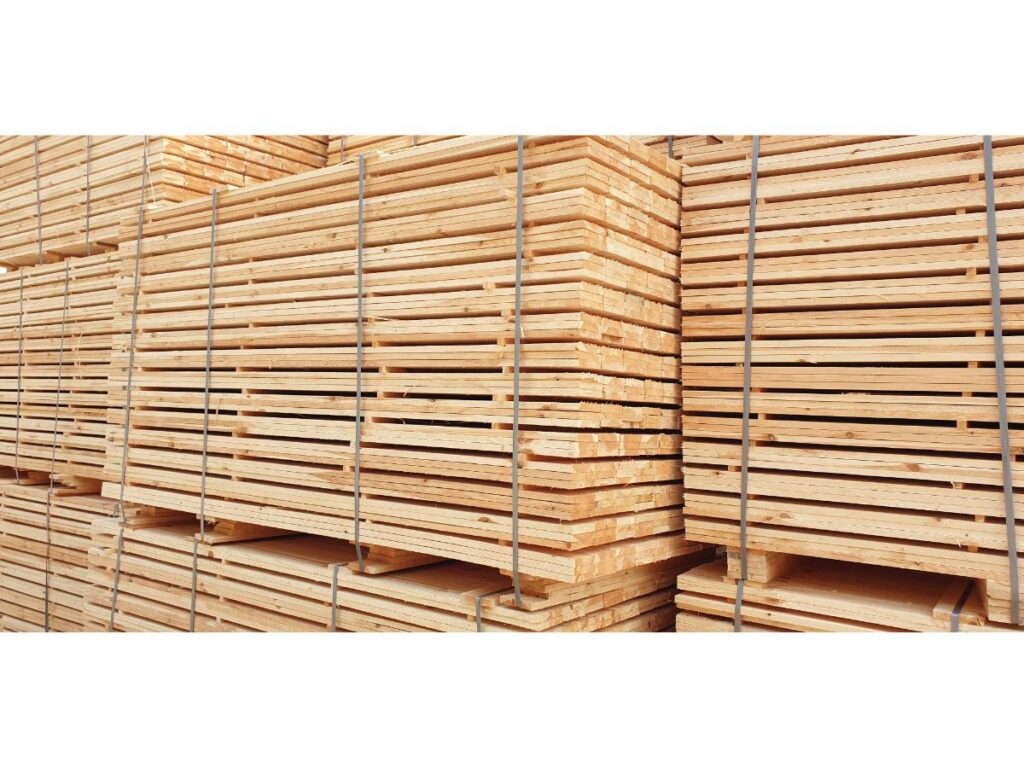Introduction
If you’re looking for a profitable and rewarding business opportunity, starting a pallet business could be the way to go. For many sectors, pallets are a crucial component of the supply chain, and demand for them is only increasing. However, launching a pallet business needs thorough planning and consideration of a number of variables, including as market demand, legal requirements, available finance, equipment, and location.
In this post, we’ll walk you through the essential procedures for launching a profitable pallet business while offering helpful advice and insights along the way. This guide will give you useful information to get started, whether you’re trying to establish a manufacturing, recycling, repairing, or distribution pallet business.
Quick Overview
| Step | Key Points | Challenges | Tips & Tricks |
|---|---|---|---|
| 1 | Industry Trend | Keeping up with changing demands and regulations | Stay informed through industry publications and networking with other pallet businesses |
| 2 | Business Plan | Creating a comprehensive and realistic plan that outlines all aspects of the business | Contact Professional Business Plan Writer |
| 3 | Investment | Start-up costs and recurring expenditures, including equipment, supplies, and insurance | Carefully budget and seek out funding options, such as loans or investors |
| 4 | Equipment and Supplies | Appropriate equipment and supplies vary depending on the type of pallet business | Research and invest in high-quality equipment and supplies to ensure efficiency and safety |
| 5 | Business Location | Consider proximity to suppliers and customers, access to transportation, and availability of utilities | Conduct thorough research and consider all factors before selecting a location |
| 6 | Funding Options | Personal savings, bank loans, investors, grants, and crowdfunding are all potential options | Explore all options and carefully consider the pros and cons of each before making a decision |
| 7 | Legal Requirements | Registration, licensing, certification, and OSHA regulations are important considerations | Seek out expert advice and ensure compliance with all legal requirements |
| 8 | Prices and Profitability | Pricing can vary depending on the market and business model | Conduct thorough market research and carefully consider pricing strategies to ensure profitability |
| 9 | Labor | Hiring and training employees is an important aspect of running a successful pallet business | Develop clear job descriptions and invest in comprehensive training programs |
| 10 | Insurance | Insurance is an important aspect of protecting the business and employees | Seek out comprehensive coverage and regularly review policies to ensure adequate protection |
| 11 | Marketing | Identifying potential customers and tailoring marketing strategies to their needs | Develop a strong online presence and build relationships with customers through excellent customer service |
Step 1. Market Overview
The pallet industry in the US is a large and thriving sector that plays a crucial role in the country’s supply chain management and logistics. Here’s an overview of the pallet industry in the US:
Market size: According to a report by IBIS world, the US pallet market was valued at $14.0 billion in 2022 and increased 2.5% in 2022
Market segments: The US pallet industry is segmented into wooden pallets and plastic pallets, with wooden pallets accounting for the majority of the market share. The demand for plastic pallets is growing due to their durability, hygiene, and eco-friendliness.
End-use industries: The major end-use industries for pallets in the US include retail, food and beverage, pharmaceuticals, chemicals, and automotive. The food and beverage industry is the largest consumer of pallets, accounting for around 35% of the market share.
Market trends: The US pallet industry is experiencing several trends, including the adoption of sustainable and eco-friendly pallets, the use of automation and technology to increase efficiency, and the growth of pallet rental services.
Key players: The US pallet industry has several key players, including CHEP, PECO, iGPS, and Millwood Inc., among others.
Regulations: The US pallet industry is regulated by various government agencies, including the Environmental Protection Agency (EPA), Occupational Safety and Health Administration (OSHA), and the International Plant Protection Convention (IPPC), among others.
Step 2. Business Plan
Having a solid business plan is crucial when starting any business, including a pallet business. Here are some reasons why having a solid business plan is important:
Helps to define the goals and objectives of the business: A business plan helps to define the goals and objectives of the pallet business. This includes identifying the target market, the types of pallets to be produced, pricing strategies, and marketing plans. Defining these objectives helps to create a clear direction for the business, which is essential for success.
Provides a roadmap for the business: A business plan provides a roadmap for the business, outlining the steps required to achieve the goals and objectives of the business. This includes identifying the resources required, such as raw materials, machinery, and labor, and the timeline for their acquisition. Having a roadmap helps to ensure that the business stays on track and helps to avoid costly mistakes.
Helps to secure financing: A well-written business plan is essential for securing financing from investors or lenders. It demonstrates that the business owner has a clear understanding of the industry, the target market, and the competitive landscape. This helps to instill confidence in investors or lenders, increasing the likelihood of securing financing.
Startup Stunners has been providing high-quality business plan writing services for years, and we’re ready to assist you in developing a complete, effective strategy that will move your company ahead.
Our team of professionals is committed to assisting you in achieving your company objectives and obtaining finance from banks, grants, or other sources. We’re here to help you succeed whether you’re a newbie, entrepreneur, or small company owner. Don’t put it off any longer; visit startupstunners.com/contact-us/ today and let us lead you to success!
Step 3. Investment
1. Startup Costs:
Facility: Depending on the size and location of the facility, the cost of renting or buying a facility for the manufacture or storage of pallets can range from $50,000 to $500,000.
Equipment: Depending on the kind and caliber of the equipment required, the cost of buying it to manufacture or repair pallets can range from $50,000 to $200,000.
Materials: Depending on the scale of production, the price of raw materials used to make pallets, such as wood, nails, and glue, can range from $50,000 to $100,000.
Legal and professional fees: Fees can range from $5,000 to $15,000. These fees are charged for services like business registration and obtaining licenses and permits.
Marketing and advertising expenses: Expenses for promoting the company can run anywhere from $5,000 to $20,000.
2. Recurring Expenditure:
Rent or Mortgage: Depending on the location and size of the facility, the monthly cost of rent or mortgage payments might range from $2,000 to $10,000.
Labor Costs: Depending on the number of employees and their compensation, the monthly cost of employing and paying personnel might range from $5,000 to $20,000.
Materials: Depending on the scale of production, the ongoing cost of raw materials for making pallets, such as wood, nails, and glue, can range from $10,000 to $50,000 each month.
Utilities: Depending on the size of the plant and the level of production, the monthly cost of utilities including power, water, and gas can range from $1,000 to $5,000.
Insurance: Depending on the type and extent of protection required, the monthly cost of insurance for the company might range from $1,000 to $5,000.

Step 4. Equipment and Supplies
The equipment and supplies needed for different types of pallet businesses can vary depending on the specific operations and services being offered. Here are some examples of the equipment and supplies needed for different types of pallet businesses:
Manufacturing: Pallet manufacturing requires machinery for cutting, shaping, and assembling pallets, as well as equipment for transporting and storing raw materials and finished products. Some of the common equipment and supplies needed for pallet manufacturing include:
- Sawmill or lumber yard equipment for processing raw materials
- Pallet nailing machines or assembly lines
- Saws, drills, and other cutting tools
Recycling: Pallet recycling involves disassembling and salvaging reusable parts from old or damaged pallets. The equipment and supplies needed for pallet recycling include:
- Pallet dismantling machines or hand tools
- Saw blades, hammers, and other hand tools for disassembly
- Pallet repair kits and supplies, such as nails, screws, and glue
Repairing: Pallet repairing involves fixing damaged or broken pallets to extend their usable life. The equipment and supplies needed for pallet repair include:
- Pallet repair kits and supplies, such as nails, screws, and glue
- Saw blades, hammers, and other hand tools for repairing
Distributing: Pallet distribution involves transporting pallets from manufacturing or recycling facilities to customers. The equipment and supplies needed for pallet distribution include:
- Trucks or other vehicles for transporting pallets
- Pallet jacks, forklifts, and other material handling equipment for loading and unloading pallets
Step 5. Business Location
When choosing a location for your pallet business, there are several factors to consider:
Proximity to Suppliers and Customers: Depending on the type of pallet business you are starting, you may need to be located near suppliers of raw materials or near customers who need your products or services. For example, a pallet manufacturer may need to be located near a source of wood or other materials, while a pallet distributor may need to be located near customers who need pallets for transportation or storage.
Access to Transportation: Pallets are typically heavy and bulky, so having good transportation access is essential for both receiving raw materials and shipping finished products. Look for locations that are near major highways or transportation hubs, and that have easy access for trucks or other large vehicles.
Access to Transportation: Pallets are typically heavy and bulky, so having good transportation access is essential for both receiving raw materials and shipping finished products. Look for locations that are near major highways or transportation hubs, and that have easy access for trucks or other large vehicles.
Following locations are appropriate for starting a pallet business
The Midwest: Due to the region’s robust industrial sector and high pallet consumption, pallets are in great demand in the Midwest. Furthermore, the area is well connected to important transportation hubs, which facilitates the distribution of pallets to clients across the nation.
Southeast: Due to the region’s sizable and expanding population, pallets are in great demand as well as merchandise. Additionally, the area is home to numerous big manufacturers and distribution facilities, thus pallet demand is high.
West Coast: With so many important ports and distribution hubs there, the West Coast is the perfect place for a pallet firm that wishes to serve clients all over the nation. Pallets are in great demand in the area because it has a sizable population and a robust manufacturing sector.
Step 6. Funding Options
Starting a pallet business requires capital, and there are several funding options available to entrepreneurs. Here’s an overview of some of the different funding options for starting a pallet business:
Personal savings: Using personal savings is a common way to fund a business. This option allows you to retain full ownership and control of your business, but also means taking on all the financial risk.
Bank loans: Banks offer business loans that can be used to finance start-up costs, purchase equipment, and cover operating expenses. Interest rates and repayment terms vary depending on the lender and the borrower’s creditworthiness.
Investors: Investors can provide funding in exchange for a percentage of ownership in the business. This option can be attractive for entrepreneurs who want to retain control over their business while still obtaining funding.
Step 7. Legal Requirements
Starting a pallet business in the US involves complying with various legal requirements and regulations. Here’s an overview of some of the key legal considerations:
Business Registration: To start a pallet business, you’ll need to register your business with the appropriate state and local authorities. This involves obtaining a business license, tax identification number, and any other permits required by your local government.
Insurance: You’ll need to obtain business insurance to protect your assets and cover liability claims. This may include general liability insurance, property insurance, and workers’ compensation insurance. More about insurance to be covered in step 10
Environmental Regulations: The pallet industry is subject to various environmental regulations, including regulations related to the handling and disposal of wood waste. Make sure to comply with all relevant regulations, including those related to air and water quality, hazardous waste, and stormwater runoff.
Federal Employer Identification Number (FEIN): If you plan to hire employees for your pallet business, you’ll need to obtain a FEIN from the IRS. This is used to identify your business for tax purposes.
State and Local Licensing Requirements: Some states and local governments may require specific licenses for pallet businesses. For example, some states require businesses that handle or transport hazardous materials to obtain a hazardous materials license.
The following regulatory organizations in the US are in charge of various facets of the pallet business:
Occupational Safety and Health Administration (OSHA): OSHA sets and enforces safety and health standards in the workplace, including regulations related to the safe handling and storage of pallets.
Environmental Protection Agency (EPA): Pallet disposal is governed by the Environmental Protection Agency (EPA), especially when the pallets have undergone chemical treatment or are contaminated.
Department of Transportation (DOT): The DOT regulates the transportation of pallets, including the size and weight of loads, and the use of proper tie-downs and restraints.
Department of Agriculture (USDA): The USDA regulates the treatment of pallets used in the shipment of agricultural products, including regulations related to the use of heat treatment or fumigation to prevent the spread of pests and diseases.
Learn more about licensing requirements in your state by visiting SBA’s reference to state licenses and permits
Step 8. Prices and Profitability
The prices of different types of pallets vary depending on the type of material, size, quality, and region. Here is an analysis of the prices of different types of pallets and their profitability:
Wooden pallets: Wooden pallets are the most commonly used type of pallet, and their price varies depending on the size and quality. A standard 48″ x 40″ wooden pallet may cost between $8 and $20, depending on the region and quality. However, the profitability of wooden pallets may vary depending on the cost of raw materials, labor, and overhead costs. For instance, if the cost of raw materials and labor is high, the profitability of wooden pallets may be lower.
Plastic pallets: Plastic pallets are becoming increasingly popular due to their durability, hygiene, and eco-friendliness. The price of plastic pallets is higher than wooden pallets, with a standard 48″ x 40″ plastic pallet costing between $40 and $80. However, the profitability of plastic pallets may be higher than wooden pallets due to their higher price and longer lifespan.
Metal pallets: Metal pallets are less common than wooden and plastic pallets due to their higher cost and weight. A standard 48″ x 40″ metal pallet may cost between $80 and $150, depending on the region and quality. However, the profitability of metal pallets may be higher than wooden and plastic pallets due to their durability and longer lifespan.
Calculating the right pricing strategy is crucial for the success of any business. It directly affects your revenue streams and profitability. To help you with this important aspect, we have developed a convenient tool on our website. Our pricing calculator allows you to determine the optimal price for your services based on a markup basis. Access our pricing calculator tool to simplify the process and ensure you are setting competitive and profitable prices for your business
Step 9. Labor
Hiring and training employees is an important aspect of any pallet business. Here are some factors to consider when hiring and training employees:
Job descriptions: Develop clear job descriptions for each position in the pallet business, including required skills, experience, and responsibilities.
Recruiting: Use a variety of recruiting methods, such as online job boards, referrals, and social media, to attract potential candidates. Screen applicants based on their qualifications, experience, and fit for the company culture.
Training: Provide comprehensive training to employees on the specific equipment and processes used in the pallet business, as well as safety procedures and industry regulations. Consider partnering with industry associations or training programs to provide specialized training. Step
Step 10. Insurance
Any business, including pallet enterprises, must have insurance. To guard against potential dangers and obligations, it’s crucial to have sufficient insurance coverage. The following are some typical insurance plans that a company that sells pallets could require:
- General Liability Insurance: This insurance plan offers protection against claims of physical harm and property damage that may result from the conduct of your business.
- Property Insurance: This insurance plan covers your company’s real estate, including your manufacturing machinery, stock, and office space.
- Workers’ Compensation Insurance: This insurance plan covers your employees who become ill or injured at work.
- Commercial auto insurance: This offers coverage for automobiles employed in your company’s operations, such as delivery trucks.
- Umbrella Insurance: This insurance policy extends the liability protection provided by your primary insurance policies by additional amounts.
Step 11. Marketing
Marketing and selling pallets can be a complex process, but here are some key strategies to keep in mind:
Identify your target market: Determine which industries and customers are most likely to buy your pallets. Consider factors such as the type and size of the pallets, the materials used, and any unique features or benefits.
Develop a marketing plan: Once you’ve identified your target market, develop a marketing plan that outlines how you will reach and communicate with potential customers. This may include tactics such as trade shows, direct mail, online advertising, or social media.
Build relationships with customers: Establish strong relationships with your customers by providing excellent customer service, timely delivery, and quality products. Consider offering incentives or discounts for repeat business, and solicit feedback from customers to identify areas for improvement.
Build and Maintain a Strong Online Presence: A strong online presence allows you to reach a wider audience, showcase your products and services, and interact with potential and existing customers
Conclusion
Starting a pallet business can be a profitable venture, with a growing demand for pallets across various industries in the US. However, there are also potential challenges to consider, such as competition, legal regulations, and environmental concerns. To be successful, it is important to have a solid business plan, carefully consider the location and equipment needed, and build strong relationships with customers.
Additionally, effective marketing and sales strategies, along with excellent customer service, can help a pallet business stand out in the market. With proper planning and execution, a pallet business can be a successful and profitable venture.
Frequently Asked Questions
1. What is a pallet business?
A pallet business involves the production, recycling, repairing, distributing, or selling of pallets, which are used to transport goods and products.
2. Is a pallet business profitable?
Yes, a pallet business can be profitable if run efficiently, with careful attention paid to market demand, pricing, and production costs.
3. What are the different types of pallet businesses?
The different types of pallet businesses include pallet manufacturing, pallet recycling, pallet repairing, and pallet distribution.
4. What are the legal requirements for starting a pallet business in the US
The legal requirements for starting a pallet business in the US include registration, licensing, and certification, as well as compliance with OSHA safety regulations and environmental regulations for the disposal of damaged or unwanted pallets.
5. What equipment and supplies are needed for a pallet business
The equipment and supplies needed for a pallet business depend on the type of business. A pallet manufacturing business will require machinery, raw materials, and a facility, while a pallet recycling or repairing business will require tools and equipment for disassembling and repairing pallets. A pallet distribution business will require vehicles for transportation.
6. How can I market and sell pallets?
You can market and sell pallets by identifying potential customers and tailoring your marketing strategies to their needs. Building relationships with customers and providing excellent customer service is also important. Creating a strong online presence and using social media to reach customers can be effective as well.
8. How can I fund my pallet business?
You can fund your pallet business through personal savings, bank loans, investors, grants, or crowdfunding. It’s important to carefully evaluate the pros and cons of each option and prepare a convincing pitch to investors or lenders.
9. What are the potential challenges of starting a pallet business
The potential challenges of starting a pallet business include competition from established businesses, fluctuating market demand, production costs, and regulatory compliance. It’s important to conduct thorough research and create a solid business plan to mitigate these challenges.






